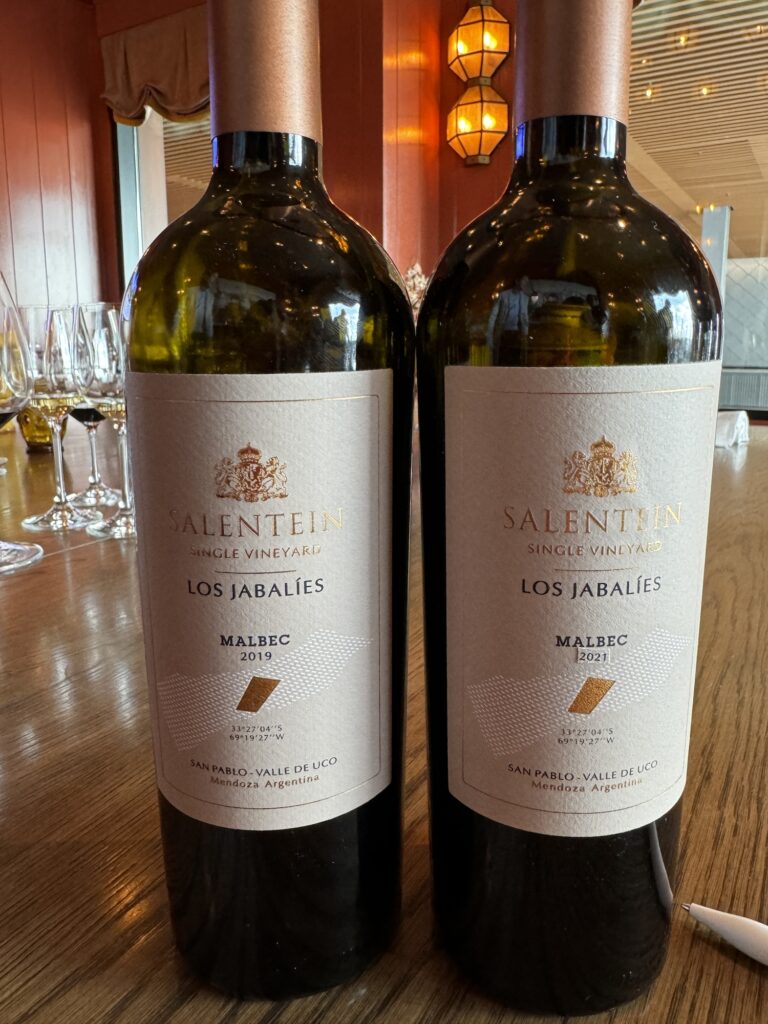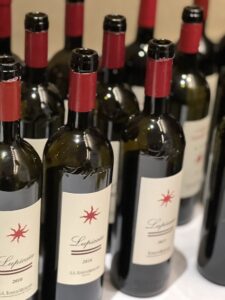Salentein Uco Valley Wines
Salentein Uco Valley Wines: A Journey through Uco Valley’s Terroir
It was my pleasure to attend a technical tasting of Bodega Salentein wines in New York. This is more than four years after a scheduled visit to this Uco Valley (Argentina) winery with fellow students from the OIV MSc in March of 2020.
Today’s Masterclass was hosted by Head Winemaker Jorge Cabeza and Matias Bauza Moreno at the Carne Mara restaurant on trendy Pier 61. Though Salentein produces a variety of wines from many vineyards, the focus today was on the San Pablo geographical area within the larger Uco Valley, known for its high elevation and diversity of microclimates.
In the course of the nine wine tasting, I experienced three key grapes (Chardonnay, Pinot Noir, and Malbec) and numerous soil types and elevations. Salentein was founded in 1996 by Dutch businessman Mijndert Pon, who had the foresight to purchase the best, highest elevation vineyards in the Uco Valley.

With vineyards ranging from 1,200 to 1,700 meters above sea level in the San Pablo GI (Geographic Indication), Salentein’s wines are imbued with vibrant acidity, depth, and finesse.
The estate is a pioneer in sustainable winemaking, supporting local schools and working closely with neighboring vineyards to protect the ecology of this region.
The Uco Valley’s cool, continental climate plays a key role in the development of Salentein’s wines. Summers are warm, but nighttime temperatures drop dramatically—often as low as 39°F, even after daytime highs of 85°F. This fluctuation helps the grapes retain their natural acidity, which is essential for producing balanced wines. With an average rainfall of 500 millimeters, some years allow dry farming without irrigation, further enhancing the character of the wines.

The Wines of Salentein
At the tasting, we explored the nuances of several key wines, each representing the incredible potential of the San Pablo terroir.
The tasting kicked off with the Numina Chardonnay 2023 is a vibrant expression of the estate’s diversity. The wine is a blend of Chardonnay from different vineyard blocks, 20% aged in concrete and the remainder in oak and stainless steel. The result is a wine with a rounded mouthfeel, ripe peach flavors, a hint of vanilla, and a savory, mineral finish.
The Single Vineyard Las Secuoyas Chardonnay 2021 was another standout. This vineyard, situated at 1,600 meters, produces a rich and concentrated wine, known for its creamy texture and bright acidity. Salentein first recognized the potential of this vineyard in 2010, and today, the wine shows impressive complexity with notes of lemon, subtle mint, and a distinct buttery richness.
I also enjoyed the Salentein Single Vineyard Secuoyas Chardonnay 2019, with a deeper golden color and more intense variation of the rich, buttery flavors.
We also sampled the Los Jabalíes Pinot Noir 2021, a lighter-bodied and fragrant wine that stands up to competition from Burgundy and other cool-climate Pinot Noir regions. With aromas of violets and red fruits, this Pinot Noir is a delicate yet expressive wine that beautifully reflects the cool, high-altitude conditions of Uco Valley.

Salentein’s Malbec: A True Expression of Uco Valley
Salentein’s legacy with Malbec is deeply tied to its La Pampa Estate, where their first vineyards were planted. The Single Vineyard Malbec 2021 from this estate showcased the classic violet and plum notes, along with velvety tannins and a long, creamy finish. We also experienced the delicious 2019 and 2010 Vintage, with the 2010 holding its vibrant acidity after 14 years.
The final two Malbecs were the the 2019 and 2021 Los Jabalíes Malbec. These Malbecs reflect Salentein’s deep understanding of their terroir, blending the warmth of Mendoza’s sun with the cooling influence of the Uco Valley’s altitude.
A Look Toward the Future
Salentein continues to innovate with precision viticulture, using detailed soil maps to tailor their vineyard management and microvinification techniques. They aim to extract the full potential of each vineyard block.
In a competitive global market, Salentein is carving a niche for Argentine wines, demonstrating that Argentina is not just about affordable, easy-drinking wines, but also high-end, world-class selections that can stand alongside the best from Burgundy, Napa, and beyond.




